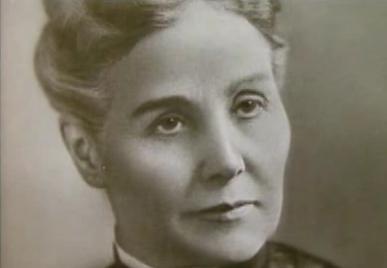By Blake Harris
This coming weekend, our country will honor mothers on Mother’s Day. The holiday can be a day of joy. But it is often punctuated by sorrow. This year, many will long to celebrate the holiday with loved ones they are unable to visit due to the current pandemic. Some will remember mothers they have lost. And other mothers will grieve the shattering loss of a child. The experience of loss on Mother’s Day can feel isolating. Actually, it was out of this experience – of grieving mothers – that Mother’s Day has its roots.
In the late 1850s, Ann Jarvis, widely considered the ‘mother’ of Mother’s Day, established Mother’s Work Day, a day dedicated to teaching mothers how to better prepare food and clean so as to prevent disease. This mission was driven by personal experience, as seven of her eleven children died before adulthood. Though personal, this experience was anything but unique in a time before vaccines and a widespread understanding of germ theory.
Jarvis’s work took on new meaning during the Civil War. Her home was in close proximity to a major battlefield and the county was flooded with wounded Confederate and Union soldiers. She organized groups of mothers to visit the wounded and ailing of both Union and Confederate loyalty, tending to their injuries and instructing soldiers and camp staff about basic sanitation strategies. Jarvis was not only concerned with the well-being of the young soldiers and sons, but also with that of a post-war, unified, country.
The carnage of the war spurred women, like Jarvis, around the country to find ways to help where they could. After the war, Julia Ward Howe, helped to reshape what Mother’s Day could mean. As a volunteer for the United States Sanitary Commission during the Civil War, she helped alleviate the effects of disease and injury. After the War, Julia wrote her “Appeal to womanhood throughout the world”, later the “Mother’s Day Proclamation”, which attempted to unite women around the world together to bring about a lasting peace:
Our sons shall not be taken from us to unlearn all that we have been able to teach them of charity, mercy, and patience. We, women of one country, will be too tender of those of another country, to allow our sons to be trained to injure theirs.
Mother’s Day continued to be celebrated as a movement for peace, but was only celebrated at local levels until the turn of the century. In 1908, Anna Jarvis, daughter of the aforementioned Ann Jarvis, began to campaign to make Mother’s Day a federally recognized day in honor of her mother who had died in 1905. The first nationally celebrated Mother’s Day was in May of 1914. But what had been a day dedicated first to cleanliness and later to peace was again repurposed, this time to celebrate mothers themselves.
As we celebrate the devoted and loving mothers in our lives, we think back to the origins of the holiday and remember the goals of the mothers who began this tradition: to keep their children safe, prevent the spread of disease, to reduce suffering, and to work for peace. Today we share these goals, and wish you all a Mother’s Day full of love, peace and remembrance.
*Since opening to the public, staff at President Lincoln’s Cottage has spent time thinking about the nature and patterns of grief. The Lincoln family initially came to the Cottage after the death of their son, Willie, in part to find the space and quiet to grieve privately. To honor the Cottage as a place of healing, we are planning an upcoming exhibit on grief and child loss so that modern families may also use this space to reflect and connect with the past. Please click here for more information on this upcoming exhibit and ways that you can help support this important work.

